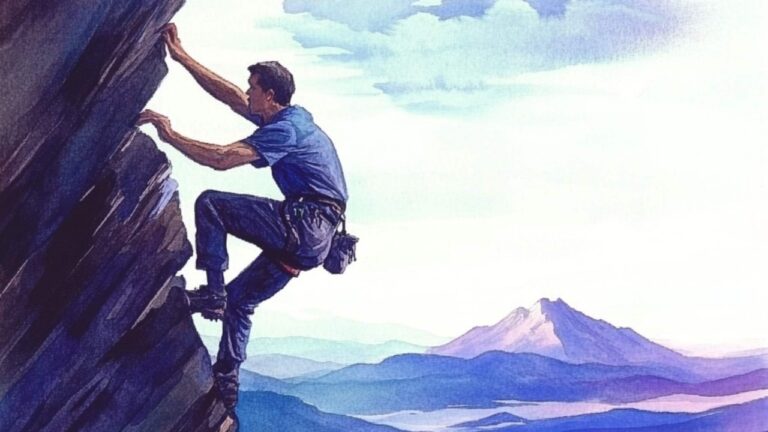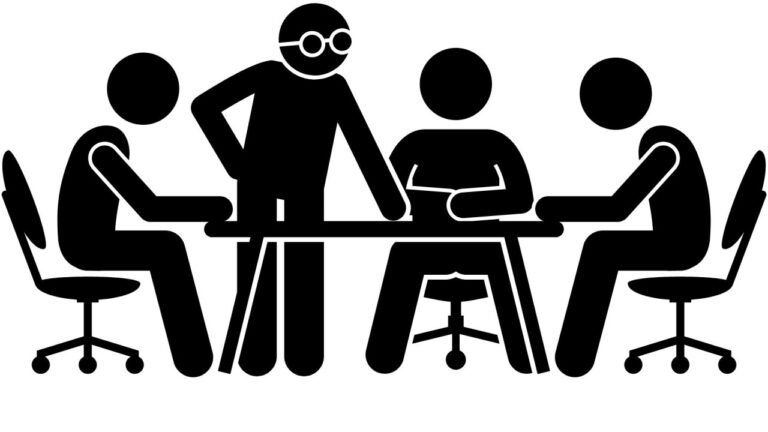Circle of Possibilities: How We Evaluate Ideas
The Creativity Conundrum!
An average person evaluates a piece of information, news, or reported experience of someone based on his or her own “circle of possibilities.”
What is the “Circle of Possibilities”?
The “circle of possibilities” is the mental framework we use to interpret and assess information. It is shaped by our personality, proclivities, tendencies—what we call Samskaras in Sanskrit—and our deeply held value systems and beliefs. Some people are naturally optimistic, while others are naturally pessimistic. These inherent tendencies influence how we process external stimuli and make sense of the world around us.
The Age-Old Question: Does Experience Shape Knowledge or Vice Versa?
The answer is: it happens both ways.
• Your natural brain set point leads you to interpret external stimuli in a certain way.
• This interpretation influences your actions, leading to outcomes that align with your strongly held beliefs.
• In turn, your beliefs shape how you process the results of those actions.
In essence, you experience your beliefs, and your experiences validate your beliefs.
This cycle explains why changing deeply rooted beliefs—whether in individuals or communities—is so challenging. It also explains why propaganda, once established, becomes difficult to dismantle.
Thought Happens First, Explanation Follows: One key observation is that the thought or response to an idea happens first, often instinctively, and the “theory” or rationale behind that belief comes later. The explanation is usually shaped by the person’s professional background, personal experiences, or worldview.
For example:A management consultant might frame their response around frameworks or business viability; An academic might lean on established theories or research; A doctor might consider biological or scientific plausibility; A researcher might cite existing data or the lack thereof.
This process highlights the interplay between our instincts and the narratives we build to justify our beliefs.
The Influence of Value Systems
People also tend to see information through the lens of their own value system and worldview. When new information collides negatively with their beliefs or values, the reaction can often be extreme—even violent.
We’ve all seen this play out in:
• Group discussions
• TV debates
• WhatsApp conversations
• General conversations
As T.S. Eliot once remarked, “Mankind cannot handle too much truth” (though I may be paraphrasing here).
This highlights a fundamental tension: while some ideas challenge our assumptions and open us to growth, others can provoke defensiveness and rejection, especially when they strike at the core of what we hold dear.
The Power of Thought and Belief
There’s a school of thought suggesting that our internal beliefs influence the external world, especially when they are strongly held. Many have heard the saying:
“Wherever your attention goes, energy flows, and that thing grows or manifests.”
While the theory of manifestation has its proponents, let’s set it aside for now and focus instead on how people react to new information.
How People React to New Information
In my experience (without resorting to quoting psychology theories or books), people first evaluate any new information against their own circle of possibilities and value systems.
This is particularly evident with contentious topics such as:
• History
• Spirituality
• Mysticism
• Religion
• Technology
• Culture
• Psychology
• Science
Some typical reactions / responses:
• That makes sense.
• That does not make sense.
• I agree 100%.
• I beg to disagree.
• I don’t think that is true.
• It doesn’t sound like it could be true.
• How can that be possible?
• I have never seen anything of that sort.
• I do not believe in such things.
• I think that is blind belief or superstition.
• I need to see it to believe it!
• Where do you get these crazy ideas?
• Are you mad?!
• That does not sound scientific.
In general, responses tend to fall along a spectrum from “not possible” to “possible.”
Open vs. Closed Mental Models
These responses reflect the mental models individuals use to process information:
1. Open Mental Models: Open to new possibilities, willing to challenge existing beliefs, and adaptable to new evidence.
2. Closed Mental Models: Rigid, resistant to change, and dismissive of unfamiliar ideas.
Creativity thrives in open mental models, while closed ones often stifle innovation.
Creativity and Mental Models
Creativity requires:
• Open-mindedness: To explore new ideas.
• Alertness: To recognize opportunities and happy accidents.
• Resilience: To keep experimenting despite failures.
A person’s mental model profoundly impacts their ability to:
• Assess situations.
• See opportunities in problems.
• Frame problems in ways that reveal solutions.
• Evaluate the potential of new ideas.
This is the reason why you can get a varied range of responses from various academics ( let us say working in the same university and college) who are presented the same idea or proposal.
Let us examine some common professions through this lens:
Management Consultants: Not all management consultants are creative. While some can develop new frameworks, models, systems and approaches as needed, others are only able to apply frameworks, models etc that they have been taught.
Teachers, Lecturers, Professors: We have all encountered some exemplary and extraordinary teachers, but one does not see too many often them – they tend to be rare. Most can only regurgitate information they have gathered. They do not have the ability to develop new teaching methods, tools or systems.
Academics/ Academic Researchers: Creative academic researchers are also a rare breed. The average researcher is not able to create new frameworks, models etc so easily. Very few academics / researchers develop new insights that leads them to publishing books/papers/articles that changes long held concepts / ideas / beliefs in their chosen area.
Let us analyze five additional professions through the lens of creativity and originality. The evaluation focuses on the proportion of individuals in these professions who contribute creatively versus those who operate reactively.
Software Engineers / Developers
Software engineering is a field where creativity can shine through the development of novel algorithms, innovative software solutions, and unique ways to address technical challenges. However, most software engineers work within the constraints of established frameworks, tools, and coding standards. They often apply patterns and libraries without fundamentally creating new technologies.
Only a small subset of engineers, typically working in research and development, open-source projects, or start-ups, exhibit creativity by inventing new programming languages, frameworks, or systems. Most others focus on implementation, optimization, or maintenance. The Pareto principle seems to apply here, with 20% of developers driving most creative breakthroughs.
Marketing Professionals
Marketing requires both strategic thinking and creativity to design impactful campaigns, slogans, and strategies. Creative marketers stand out by developing memorable campaigns, innovative branding techniques, and unique customer engagement strategies.
Many marketers rely on tried-and-tested methods, analytics, and generic content, producing work that is more operational than original. The truly creative marketers—those who redefine industries or set trends—are relatively rare, comprising the top percentile in the field.
Entrepreneurs
Entrepreneurs are expected to be creative problem-solvers, developing innovative products, services, and business models. However, not all entrepreneurs create groundbreaking ventures. Many replicate existing ideas, adapting them to new contexts or geographies without introducing significant innovation.
The creative 20% in this field are the game-changers, introducing disruptive technologies or new markets. The remaining 80% often execute ideas with minor variations, focusing on scalability and operations rather than originality.
4. Doctors / Medical Professionals
The medical field is a discipline of precision and adherence to evidence-based practices. While some doctors and medical researchers innovate by developing new surgical techniques, treatment protocols, or diagnostic tools, most practitioners follow established guidelines and protocols.
Creativity in medicine is essential but concentrated in a small fraction of the profession—typically those involved in medical research or pioneering treatments. The majority focus on applying knowledge rather than expanding it.
5. Artists (Musicians, Writers, Painters)
This profession inherently demands creativity. Artists are often judged by their ability to create unique, thought-provoking, or aesthetically appealing work. However, even within the arts, there are varying levels of originality.
While all artists require some degree of creativity, only a few truly innovate or redefine their art form. Most others work within existing genres or trends, producing derivative or predictable work. The 20% in this field are the visionaries who set trends, while the 80% refine and replicate.
Observations Across Professions: In all the professions discussed (including those previously analyzed), creativity appears to be concentrated among a minority, aligning with the Pareto principle. The “creative 20%” often define the field’s future, while the “reactive 80%” sustain its operations by implementing, maintaining, or refining established systems and practices. This underscores the rarity of originality and innovation across disciplines. The pareto rule perhaps applies here and it is also said that 20% of the employees in an organization are “creative” whereas the rest (80%) are “reactive.”
Why “Impossible” is a Temporary State
I have personally heard of so many cases where someone presented a new idea or proposal to his boss, academic advisor or client only to be told that the idea was baloney.
History is filled with examples of ideas dismissed as:
• Not practical.
• Far-fetched.
• Lacking feasibility.
Yet, these ideas often go on to revolutionize industries or societies. Creativity lies in seeing possibility where others see limitation.
We have all heard of examples such as:
- A book idea / manuscript that was rejected by the top 10-20 publishers that goes on to become one of the bestselling books of all time!
- A movie script / story that was rejected by X number of producers later on becomes a super hit movie!
- An entrepreneur whose funding request is rejected by the main VCs later gets funded by someone and goes on to become a super duper success!
Homework for You
To expand your circle of possibilities and nurture creativity, ask yourself:
- How do you evaluate if something is true or possible?
- How can you challenge yourself to expand your circle of possibilities in your profession?
- How can one become more creative?
- Can a “reactive” person transform into a “creative” one? If so, how?
- Can creativity be taught?
- Can you recall a time when you thought something was impossible, only to be proven wrong?
Final Thought
As someone said:
“Creativity is going to work using a different route every day!”
Start small. Question the unquestioned. Challenge your assumptions. Expand your circle of possibilities and who knows—what seems impossible today might be your new reality tomorrow.
What’s your circle of possibilities? Share your thoughts in the comments below!








The Yoga sutras state that we build an internal structure called an Ashraya. This limits what comes in, how it is interpreted and what gets expressed.
rdug1l
edilyf